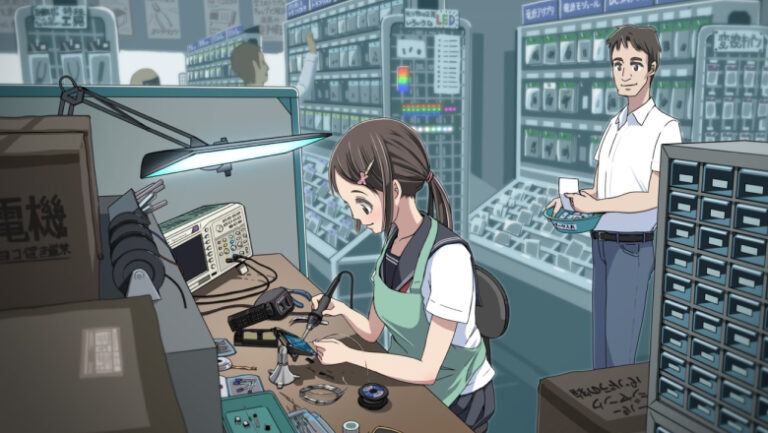Vision Pro and the history of astronautics
Hi all! Did you know that in 1988, the Soviet spacecraft Buran successfully completed an automatic landing on Earth? This was an important step in the development of space technology, similar to the launch of the first artificial satellite and spacewalk. These achievements of the USSR and other countries can now be seen in an immersive format using Vision Pro and feel the atmosphere:
Video recordings were made using iPad Pro, Apple Vision Pro simulator, and Vision owners will be able to see these stories about astronautics in unsurpassed quality. iPhone or iPad users won't be left out either: thanks to augmented reality, you can immerse yourself in these stories right in your home or office. For the most interested readers there are bonuses at the end of the article.
Sputnik-1
So, our journey through the history of astronautics begins with one of the most significant events of the 20th century – the launch of Sputnik 1. This moment became a milestone in human history: on October 4, 1957, the Soviet Union sent the first artificial satellite into Earth orbit. This event not only ushered in the era of space exploration, but also laid the foundation for the space race, in which the USSR and the USA sought to prove their technological superiority:
“Go!”
Yuri Gagarin forever inscribed his name in the history of astronautics, becoming the first person to conquer outer space. This historic flight took place on April 12, 1961, when Gagarin aboard the Vostok 1 spacecraft completed a full revolution around the Earth. The event was a major milestone in space exploration and highlighted the significant contribution of the Soviet Union in this field. This model from Apple itself is, of course, not Yuri Gagarin himself, but an example of a Soviet spacewalk suit that can be freely explored in AR:
Voskhod-2
The Voskhod 2 mission, launched into space on March 18, 1965 by the Soviet Union, has a special place in the history of astronautics as the platform for the first human spacewalk. This breakthrough in space technology not only strengthened the USSR's position in the space race, but also opened a new chapter in space exploration, demonstrating human capabilities beyond the Earth's atmosphere:
Apollo 11 mission
Please leave the discussion regarding Apollo 11 to our future descendants and proceed from the information that is presented to NASA. The Apollo 11 mission has gone down in history as the culmination of space exploration, marking the first successful landing of a man on the surface of the Moon. This momentous flight, which took place on July 16, 1969, included three key components:
The Columbia command module provides life support and mission control.
A service module containing basic life support and power supply systems.
Lunar module “Eagle”, which became humanity's “messenger” to the Moon.
Eagle
In the historic Apollo 11 mission, the Eagle lunar module played a key role in ensuring the first successful landing of man on the Moon on July 20, 1969. The Eagle was the vehicle that carried astronauts Neil Armstrong and Buzz Aldrin to the lunar surface, while Michael Collins remained aboard the command module and awaited the return of his colleagues in lunar orbit for the return trip to Earth:
Buran
The Buran spacecraft, a landmark element of the Soviet space program, was developed as a response to the American shuttle program in the 1980s. This reusable spacecraft could carry both crew and cargo into orbit, demonstrating the Soviet Union's outstanding technological capabilities in spaceflight. Burun's first and last flight into space took place on November 15, 1988, after which he successfully returned to Earth in automatic mode. Buran, officially named Energia-Buran, was distinguished by its ability to be reused, which was a significant step forward in space exploration:
ISS
The International Space Station (ISS) is a great example of how collaborative efforts can lead to extraordinary achievements. Orbiting the Earth since November 20, 1998, the ISS has become a symbol of global cooperation in space exploration. This unique project combined the technologies and knowledge of the space agencies of the United States, Russia, Europe, Japan and Canada:
Hubble
The Hubble telescope, sent into orbit by NASA on April 24, 1990, became a real window into space. Named after the famous astronomer Edwin Hubble, this spacecraft gave us a look at the amazing phenomena of the universe that were inaccessible to observation from Earth. Thanks to his work, our understanding of galaxies, stars and nebulae, as well as the very structure of the universe, has expanded significantly:
Curiosity and traces of life on Mars
The Curiosity rover, developed by NASA, is one of the most advanced robotic explorers, whose task is to comprehensively study Mars. Deployed to the red planet on November 26, 2011 as part of the Mars Laboratory mission, the rover will study Martian climate and geology and analyze data to estimate the likelihood of past life on Mars. With the help of Curiosity, scientists hope to answer many questions about the possibility of colonizing Mars and the conditions necessary to support life:
Earth, what's next?
And now some small bonuses (links to view in comments):
For fans of civil aviation, a 3D scene of the Boeing 737 cockpit, which you can explore up and down right on your iPhone or iPad
Short AR stories for Star Wars fans
For Elon Musk and the English-speaking audience, these stories are also available in the application in English
All created stories and a tool for developing applications for iOS and Vision OS are the result of the work of one person. This once again demonstrates how accessible technology has become today for creating educational and entertainment content. From the stack – SwiftUI (yes, it’s high time for it to be released!), Combine, MVVM and hosting at Selectel.
Special thanks go to Selectel for providing hosting and support, making these unique stories available to a wide audience without any restrictions. By the way, they also lead own blogwhich shows how projects can be launched on their infrastructure.
If you have ready-made 3D models and a content plan in the application, you can relatively quickly create similar scenes for interactive museums, exhibitions and educational sessions without programming skills and they can be seen by people from anywhere in the world!
I see great promise and economic benefit to display complex equipment, products, relics or even an architectural project at exhibitions using Vision Pro:
It's fascinating
The quality of models and pictures is top
This allows you to significantly save on transportation of real objects
The client does not lose touch with reality, unlike VR solutions
In general, I love you, there will be a queue at the stand and increased interest in it!
Conclusion
If you know any Apple Vision Pro owners, museum representatives, or just aerospace enthusiasts, please share these materials and links so that more people know about them. I am sure this will make people who are actively interested in such technologies happier.
For questions regarding full cycle development for Vision Pro, mobile, cooperation and other issues, you can write to me in PM or at telegram.
I wish you all great flights, conquering new heights in your work, your own endeavors and business!



